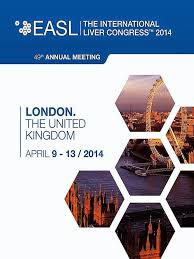 Representatives Mike Honda, Hank Johnson, and Judy Chu are asking all House Representatives to sign an important letter supporting increased funding for viral hepatitis programs in the Fiscal Year 2015 appropriations bill (see text of letter below)
Representatives Mike Honda, Hank Johnson, and Judy Chu are asking all House Representatives to sign an important letter supporting increased funding for viral hepatitis programs in the Fiscal Year 2015 appropriations bill (see text of letter below)
Please take a few minutes before March 25th to call your House Representative’s office in Washington, DC and ask/him to sign this letter.
You can reach your Representative through the Congressional Switchboard at (202) 224-3121. Ask to be connected to your Representative. Once you are connected to the office, ask to speak to the staff person who handles health care issues. Whether you speak to that person live or leave a voicemail, tell them (1) your name, (2) where you live and that you are a constituent, (3) that you would like the Representative to sign the “Dear Colleague” letter from Representatives Honda, Johnson, and Chu supporting increased funding for viral hepatitis and (4) a brief message why this issue is important to you. Tell them they can sign the letter by contacting Kelly Honda in Representative Honda’s office, Scott Goldstein in Representative Johnson’s office, or Linda Shim in Representative Chu’s office. The deadline for Representatives to sign is March 25th.
Text of “Dear Colleague” letter from Representatives Honda, Johnson, and Chu:
Support Funding for Viral Hepatitis
March XX, 2014
The Honorable Jack Kingston
Chairman
Subcommittee on Labor, Health and Human Services
United States House
Washington, D.C., 20515
The Honorable Rosa DeLauro
Ranking Member
Subcommittee on Labor, Health and Human Services
United States House
Washington, D.C., 20515
Dear Chairman Kingston and Ranking Member DeLauro:
As you begin deliberations on the Fiscal Year 2015 Labor, Health and Human Services, Education, and Related Agencies Appropriations bill, we would like to respectfully request that you allocate $47.8 million for the Division of Viral Hepatitis (DVH) at the Centers for Disease Control and Prevention (CDC), an increase of $16.4 million over the FY2014 level.
The CDC’s 2010 professional judgment (PJ) budget recommended $90.8 million each year from FY2011-FY2013, $170.3 million annually from FY2014-FY2017, and $306.3 million annually from FY2018-FY2020 for DVH in order to comprehensively address the viral hepatitis epidemic. While past increases have been helpful, these have only been small steps toward building a more comprehensive response to viral hepatitis. Our recommendation of $47.8 million is in line with the needs determined by the PJ and the goals of the Viral Hepatitis Action Plan, but pales in comparison to the CDC’s PJ.
The need to enhance and expand these prevention efforts is growing more urgent. Viral hepatitis is the leading cause of liver cancer – one of the most lethal, expensive and fastest growing cancers in America. More than 5.3 million people in the U.S. are living with hepatitis B (HBV) and/or hepatitis C (HCV) and 65-75% of them are undiagnosed. Without an adequate, comprehensive surveillance system, these estimates are only the tip of the iceberg. Viral hepatitis kills 15,000 people each year and is the leading non-AIDS cause of death in people living with HIV – nearly 25 percent of HIV-positive persons are also infected with HCV and nearly 10 percent with HBV.
The epidemic is particularly alarming because of the rising rates of new infections and high rates of chronic infection among disproportionately impacted racial and ethnic populations, and presents a dramatic public health inequity. For example, HCV is twice as prevalent among African Americans as among Caucasians. Asian Americans comprise more than half of the known hepatitis B population in the United States and, consequently, maintain the highest rate of liver cancer among all ethnic groups. Additionally, African American and Latino patients are less likely to be tested for HCV in the presence of a known risk factor, less likely to be referred to treatment for subspecialty care and treatment, and less likely to receive antiviral treatment. Recent alarming epidemiologic reports indicate a rise in HCV infection among young people throughout the country. Some jurisdictions have noted that the number of people ages 15 to 29 being diagnosed with HCV infection now exceeds the number of people diagnosed in all other age groups combined.
Further, the baby boomer population (those born 1945-1965) currently accounts for two out of every three cases of chronic HCV. As these Americans continue to age, they are likely to develop complications from HCV and require costly medical interventions that can be avoided if they are tested earlier and provided with treatment options. It is estimated that this epidemic will increase costs to private insurers and public systems of health such as Medicare and Medicaid from $30 billion in 2009 to over $85 billion in 2024, and also account for additional billions lost due to decreased productivity from the millions of workers suffering from chronic HBV and HCV.Over the last two years, CDC and the U.S. Preventive Services Task Force (USPSTF) have begun to align their recommendations for hepatitis screening, recommending one-time testing of baby boomers and screening vulnerable groups for HCV.
We appreciate the Committee’s support for viral hepatitis prevention, in particular the increased support to prioritize the identification of HBV and HCV-positive individuals who are unaware of their status. We strongly encourage you to sustain your commitment this year. We have the tools to prevent the major causes of viral hepatitis and liver cancer – a hepatitis B vaccine and effective treatments that reduce disease progression, new diagnostics for HCV and treatments that increase cure rates over 90%, and even more medical advances in the research pipeline. Making this relatively modest investment in the prevention and detection of viral hepatitis represents a key component in addressing a vital public health inequity and will get more Americans into care, strengthen our public health infrastructure and combat the devastating and expensive complications caused by viral hepatitis.
Sincerely,
XXX
 Three new studies presented today at the International Liver Congress 2014 have helped clarify the optimal use of combination therapy with peginterferon and nucleoside analogues (NUCs) to achieve the best treatment outcomes in patients with chronic hepatitis B (CHB).
Three new studies presented today at the International Liver Congress 2014 have helped clarify the optimal use of combination therapy with peginterferon and nucleoside analogues (NUCs) to achieve the best treatment outcomes in patients with chronic hepatitis B (CHB).







